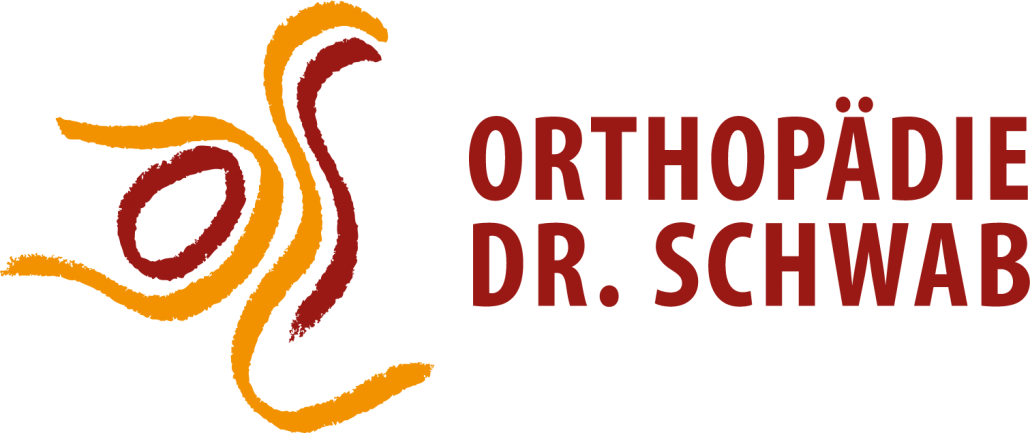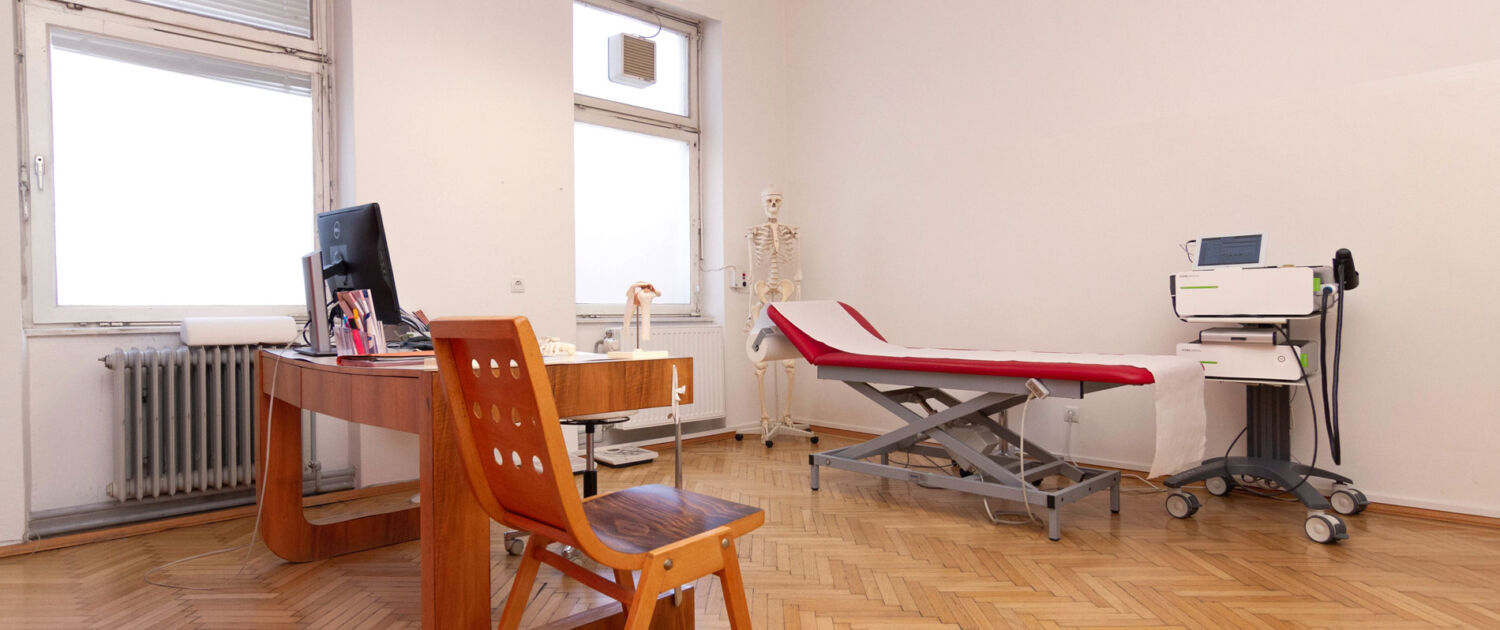The Shoulder
The shoulder joint consists of a small flat socket with a cartilaginous ring, a large head, the roof of the shoulder, a joint capsule, a synovial bursa, and a strong, surrounding tendon cuff known as the rotator cuff. This constellation is responsible for the joint’s wide range of motion in all planes. However, the tendons of the rotator cuff are exposed to extreme loads.
Due to muscular imbalances they are frequently clamped below the roof of the shoulder and thus damaged. This results in calcium deposits, partial tears and complete tears, which may also occur in cases of falls or other injuries.
The aim of treatment is to restore the muscular balance and – if necessary – restore the normal anatomy. If no tendon is ruptured the muscular balance can be restored by targeted remedial gymnastics; a tear of the tendon usually needs to be repaired by surgery. The torn tendon is fixed to its site of insertion in the humerus (the bone of the upper arm). After surgery the arm is usually protected by a special bandage for several weeks (6 weeks as a rule); the dressing may be removed only for certain exercises. This is followed by active remedial gymnastics for the purpose of restoring the muscular balance.
The following table provides a short summary of common diseases and conditions of the shoulder joint and the treatment options for these:
|
Calcified tendinitis of the shoulder/Tendinosis calcarea |
Arthroscopy of the shoulder and removal of the calcium deposit |
|
Tear in the tendon cuff / Rupture of the rotator cuff |
Arthroscopy of the shoulder and re-fixation of the ruptured tendon |
|
Chronic entrapment below the roof of the shoulder / Subacromial impingement |
Depending on the cause, remedial gymnastics or shoulder arthroscopy and smoothing the roof of the shoulder |
|
Bursitis subacromialis |
Infiltrations, remedial gymnastics or shoulder arthroscopy and removal of the synovial bursa |
|
Abrasion of the shoulder acromioclavicular joint / Osteoarthritis of the AC joint |
Surgical smoothing of the lateral end of the clavicle (collarbone) |
|
Stiffness of the shoulder/ Frozen shoulder |
Remedial gymnastics, arthroscopy of the shoulder and detachment the capsule |
Duration of the in-hospital stay after surgery:
Arthroscopy: 1-3 days
Artificial shoulder joint: 10-12 days
Follow-up treatment:
The patient has to wear a special bandage in the shoulder which keeps the operated arm immobile for several weeks after surgery.
- For Removal of a calcium deposit: up to 3 weeks.
- Smoothing the acromioclavicular joint: 3 weeks.
- Removal of synovial bursa/Smoothing the roof of the shoulder: up to 3 weeks
- Tendon suture: 6 weeks
- Artificial shoulder joint: at least 6 weeks
During this time the patient performs passive, and occasionally also assistive gymnastics. Active exercises for restoration of muscular balance should be started only afterwards, especially in cases of a tendon suture. Starting these exercises too early may cause the freshly sutured tendons to tear again.
This page is also available in: Deutsch



